2-Pentanol, 3-nitro-
Modify Date: 2024-01-08 07:22:05
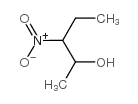
2-Pentanol, 3-nitro- structure
|
Common Name | 2-Pentanol, 3-nitro- | ||
|---|---|---|---|---|
| CAS Number | 5447-99-4 | Molecular Weight | 133.14600 | |
| Density | 1.09g/cm3 | Boiling Point | 215.8ºC at 760mmHg | |
| Molecular Formula | C5H11NO3 | Melting Point | N/A | |
| MSDS | N/A | Flash Point | 90.6ºC | |
| Name | 3-nitropentan-2-ol |
|---|---|
| Synonym | More Synonyms |
| Density | 1.09g/cm3 |
|---|---|
| Boiling Point | 215.8ºC at 760mmHg |
| Molecular Formula | C5H11NO3 |
| Molecular Weight | 133.14600 |
| Flash Point | 90.6ºC |
| Exact Mass | 133.07400 |
| PSA | 66.05000 |
| LogP | 0.94570 |
| Index of Refraction | n20/D 1.443(lit.) |
Synonym:None Section 2 - COMPOSITION, INFORMATION ON INGREDIENTS
Risk Phrases: None Listed. Section 3 - HAZARDS IDENTIFICATION EMERGENCY OVERVIEW
The toxicological properties of this material have not been fully investigated.Combustible liquid. Potential Health Effects Eye: Non-irritating to the eyes. Skin: Non-irritating to the skin. Ingestion: Low hazard for usual industrial handling. The toxicological properties of this substance have not been fully investigated. Inhalation: May cause respiratory tract irritation. Chronic: No information found. Section 4 - FIRST AID MEASURES Eyes: Flush eyes with plenty of water for at least 15 minutes, occasionally lifting the upper and lower eyelids. Get medical aid. Skin: Flush skin with plenty of water for at least 15 minutes while removing contaminated clothing and shoes. Get medical aid if irritation develops or persists. Wash clothing before reuse. Ingestion: Never give anything by mouth to an unconscious person. Get medical aid. Wash mouth out with water. Inhalation: Remove from exposure and move to fresh air immediately. If not breathing, give artificial respiration. If breathing is difficult, give oxygen. Get medical aid if cough or other symptoms appear. Notes to Physician: Antidote: None reported. Section 5 - FIRE FIGHTING MEASURES General Information: As in any fire, wear a self-contained breathing apparatus in pressure-demand, MSHA/NIOSH (approved or equivalent), and full protective gear. Will burn if involved in a fire. Use water spray to keep fire-exposed containers cool. Combustible liquid. Vapors may be heavier than air. They can spread along the ground and collect in low or confined areas. Containers may explode when heated. Extinguishing Media: In case of fire, use water, dry chemical, chemical foam, or alcohol-resistant foam. Use water spray to cool fire-exposed containers. Section 6 - ACCIDENTAL RELEASE MEASURES General Information: Use proper personal protective equipment as indicated in Section 8. Spills/Leaks: Absorb spill with inert material (e.g. vermiculite, sand or earth), then place in suitable container. Remove all sources of ignition. Provide ventilation. Section 7 - HANDLING and STORAGE Handling: Wash thoroughly after handling. Use only in a well-ventilated area. Avoid breathing dust, vapor, mist, or gas. Avoid contact with eyes, skin, and clothing. Empty containers retain product residue, (liquid and/or vapor), and can be dangerous. Keep container tightly closed. Keep away from heat, sparks and flame. Avoid ingestion and inhalation. Do not pressurize, cut, weld, braze, solder, drill, grind, or expose empty containers to heat, sparks or open flames. Storage: Keep away from heat, sparks, and flame. Keep away from sources of ignition. Store in a tightly closed container. Store in a cool, dry, well-ventilated area away from incompatible substances. Section 8 - EXPOSURE CONTROLS, PERSONAL PROTECTION Engineering Controls: Facilities storing or utilizing this material should be equipped with an eyewash facility and a safety shower. Use adequate ventilation to keep airborne concentrations low. Exposure Limits CAS# 5447-99-4: Personal Protective Equipment Eyes: Wear appropriate protective eyeglasses or chemical safety goggles as described by OSHA's eye and face protection regulations in 29 CFR 1910.133 or European Standard EN166. Skin: Wear appropriate protective gloves to prevent skin exposure. Clothing: Wear appropriate protective clothing to prevent skin exposure. Respirators: Follow the OSHA respirator regulations found in 29 CFR 1910.134 or European Standard EN 149. Use a NIOSH/MSHA or European Standard EN 149 approved respirator if exposure limits are exceeded or if irritation or other symptoms are experienced. Section 9 - PHYSICAL AND CHEMICAL PROPERTIES Physical State: Liquid Color: colorless to light yellow Odor: Not available. pH: Not available. Vapor Pressure: Not available. Viscosity: Not available. Boiling Point: 60 deg C @ .50mm Hg Freezing/Melting Point: Not available. Autoignition Temperature: Not available. Flash Point: 90 deg C ( 194.00 deg F) Explosion Limits, lower: Not available. Explosion Limits, upper: Not available. Decomposition Temperature: Solubility in water: Specific Gravity/Density: 1.0750g/cm3 Molecular Formula: C5H11NO3 Molecular Weight: 133.15 Section 10 - STABILITY AND REACTIVITY Chemical Stability: Stable under normal temperatures and pressures. Conditions to Avoid: Incompatible materials, ignition sources, excess heat. Incompatibilities with Other Materials: Strong oxidizing agents. Hazardous Decomposition Products: Nitrogen oxides, carbon monoxide, carbon dioxide. Hazardous Polymerization: Has not been reported. Section 11 - TOXICOLOGICAL INFORMATION RTECS#: CAS# 5447-99-4 unlisted. LD50/LC50: Not available. Carcinogenicity: 3-Nitro-2-pentanol - Not listed by ACGIH, IARC, or NTP. Section 12 - ECOLOGICAL INFORMATION Other No information available. Section 13 - DISPOSAL CONSIDERATIONS Dispose of in a manner consistent with federal, state, and local regulations. Section 14 - TRANSPORT INFORMATION IATA Not regulated as a hazardous material. IMO Not regulated as a hazardous material. RID/ADR Not regulated as a hazardous material. Section 15 - REGULATORY INFORMATION European/International Regulations European Labeling in Accordance with EC Directives Hazard Symbols: Not available. Risk Phrases: Safety Phrases: S 24/25 Avoid contact with skin and eyes. WGK (Water Danger/Protection) CAS# 5447-99-4: No information available. Canada None of the chemicals in this product are listed on the DSL/NDSL list. CAS# 5447-99-4 is not listed on Canada's Ingredient Disclosure List. US FEDERAL TSCA CAS# 5447-99-4 is not listed on the TSCA inventory. It is for research and development use only. SECTION 16 - ADDITIONAL INFORMATION N/A |
| Safety Phrases | S24/25 |
|---|---|
| HS Code | 2905590090 |
| HS Code | 2905590090 |
|---|---|
| Summary | 2905590090 other halogenated, sulphonated, nitrated or nitrosated derivatives of acyclic alcohols。Supervision conditions:None。VAT:17.0%。Tax rebate rate:9.0%。MFN tariff:5.5%。General tariff:30.0% |
| 3-nitro-pentan-2-ol |
| 2-Hydroxy-3-nitro-pentan |
| Methyl-(1-nitro-propyl)-carbinol |
| 2-Pentanol,3-nitro |
| 2-Hydroxy-3-Nitropentane |
| 3-Nitro-pentanol-(2) |
| 3-Nitro-2-pentanol |
| EINECS 226-669-0 |
| MFCD00007399 |
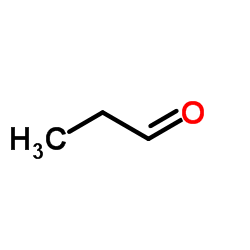 CAS#:123-38-6
CAS#:123-38-6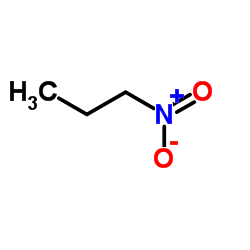 CAS#:108-03-2
CAS#:108-03-2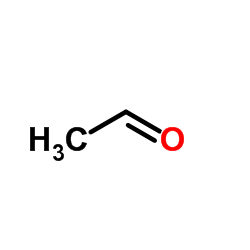 CAS#:75-07-0
CAS#:75-07-0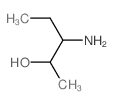 CAS#:50411-28-4
CAS#:50411-28-4 CAS#:551-88-2
CAS#:551-88-2 CAS#:51089-83-9
CAS#:51089-83-9